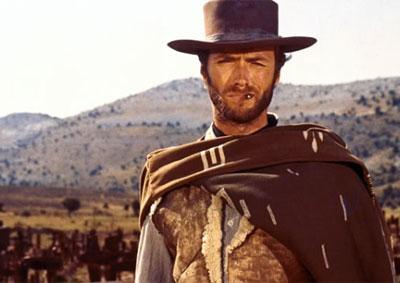Directed by Clint Eastwood
A mysterious stranger wreaks havoc on a small Western town that allowed its sheriff to be whipped to death by a gang of thugs. Similar to the townspeople in High Noon, the inhabitants of the small community at the edge of a large lake on the plains, aptly named Lago ("lake" in Italian), could populate several rings of Dante’s "Inferno". The Stranger actually has the town painted red and renames it Hell.
Clint Eastwood went through an extensive apprenticeship at Universal in the 1950s, before becoming a star in Rawhide (1959-1965), filmed on Universal’s back lot and one of many popular Western series on television in the early 1960s. When the series ended, Eastwood unexpectedly became a world superstar in Sergio Leone’s “Man with No Name” trilogy of Spaghetti Westerns, beginning with A Fistful of Dollars (1964). After starring in several more American westerns, Eastwood chose High Plains Drifter for his second directorial outing and it is now considered one of his masterpieces. A stylized, revisionist Western in the manner of Leone, it allows Eastwood the opportunity to pay homage to his Italian mentor, by marking one of the gravestones in the cemetery “Sergio Leone” (an honor also bestowed on Eastwood’s American mentor, Don Siegel). The film’s opening five minute sequence without any dialogue is also a nod to Leone, whose characters are men of few words (unfortunately, the film’s misogyny, exemplified in a rape scene, also seems to be a hold-over from the Spaghetti Westerns).
As with Eastwood’s later quasi-religious Western, Pale Rider (1985), High Plains Drifter leaves it unclear whether The Stranger is a flesh-and-blood human being or a ghost. His arrival and departure is filmed with a telephoto lens through hazy waves of heat, a physical materialization out of nothingness and disappearance back into the ether, like an angel of death. Underscoring this ambiguity, Buddy Van Horn, Eastwood’s long time stunt-double, plays the murdered sheriff.
—Jan-Christopher Horak
Universal Pictures. Producer: Robert Daley. Screenwriter: Ernest Tidyman, Dean Riesner. Cinematographer: Bruce Surtees. Editor: Ferris Webster. Cast: Clint Eastwood, Verna Bloom, Mariana Hill, Mitchell Ryan, Jack Ging.
35mm, color, 105 min.






 Mobile Navigation
Mobile Navigation

